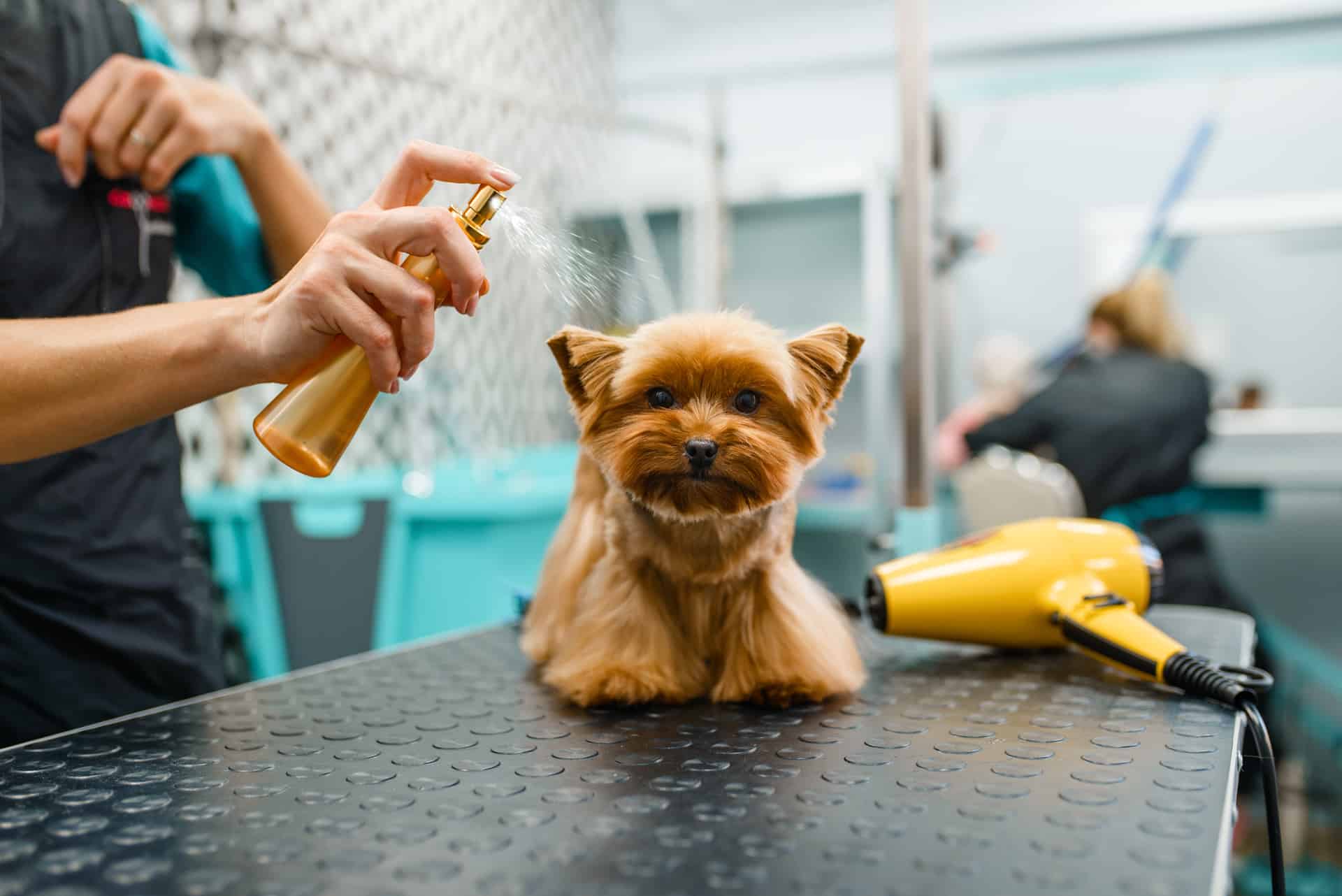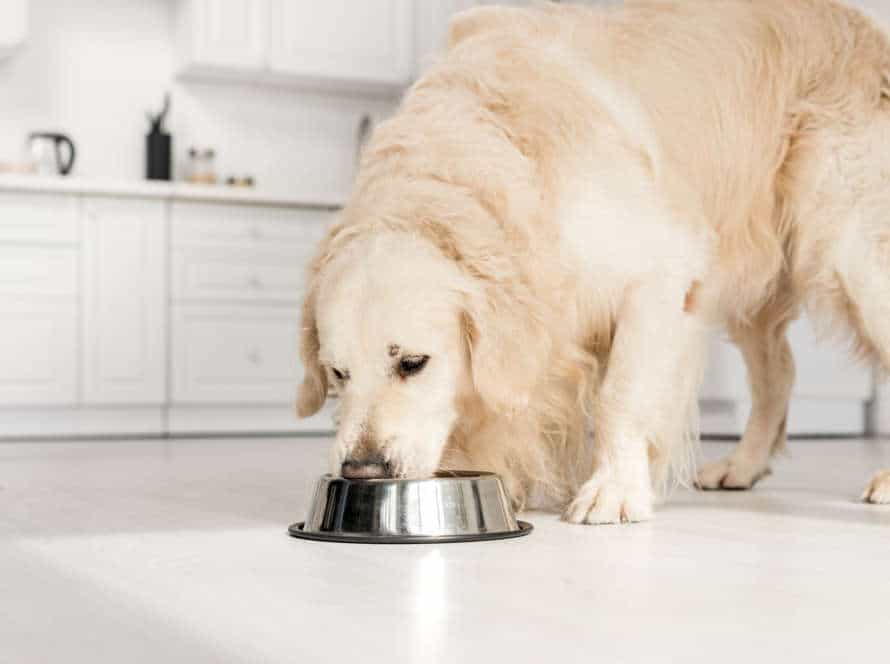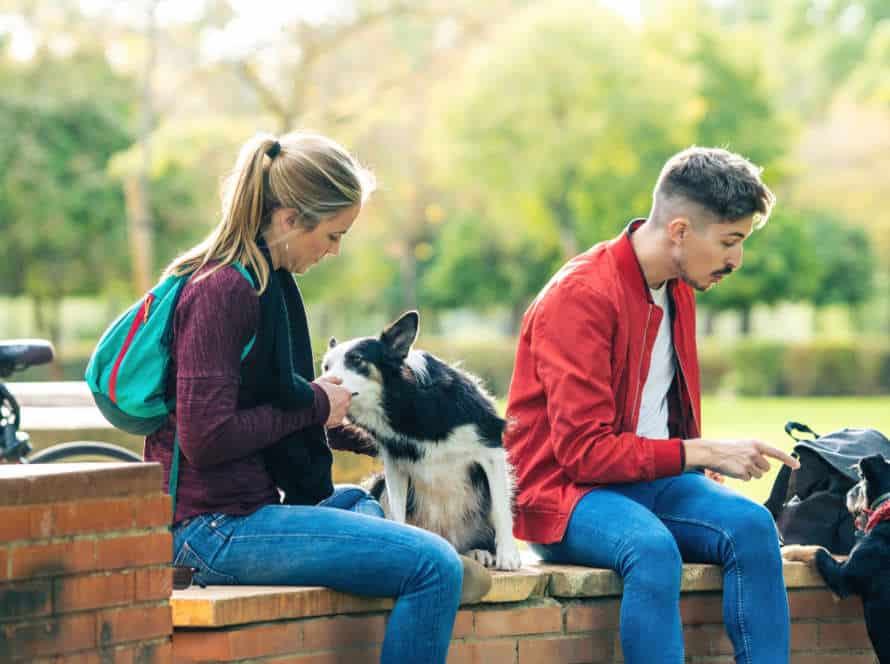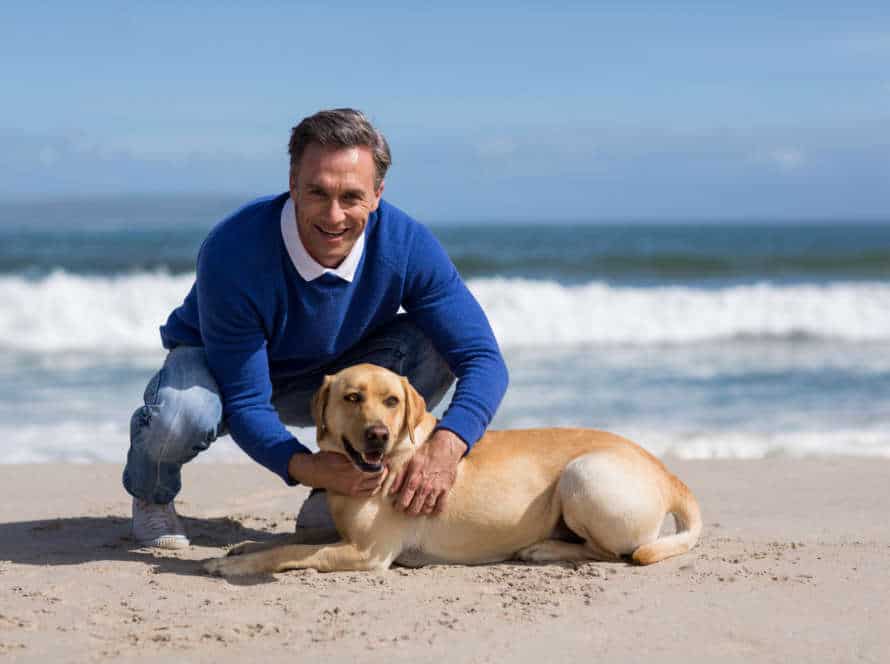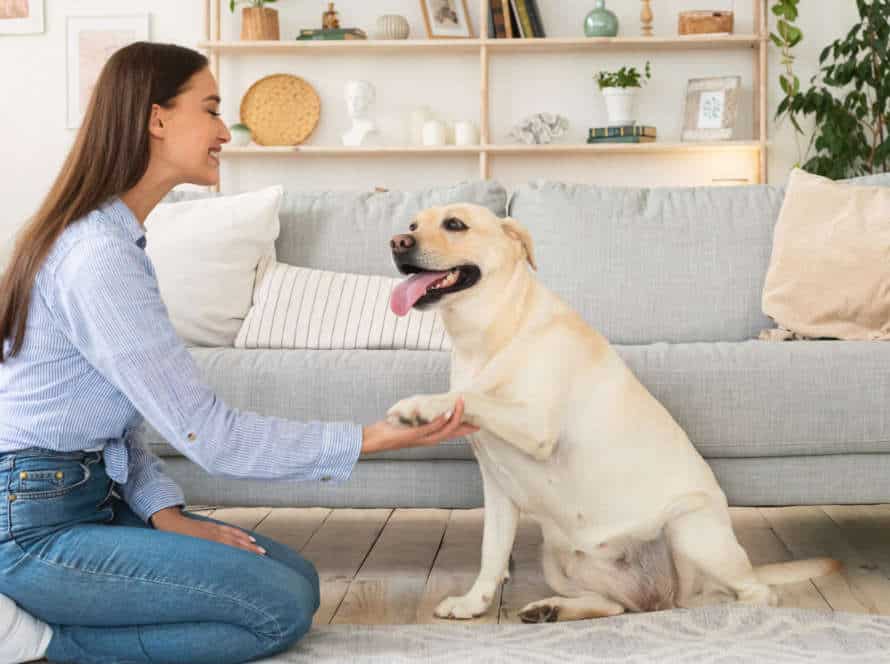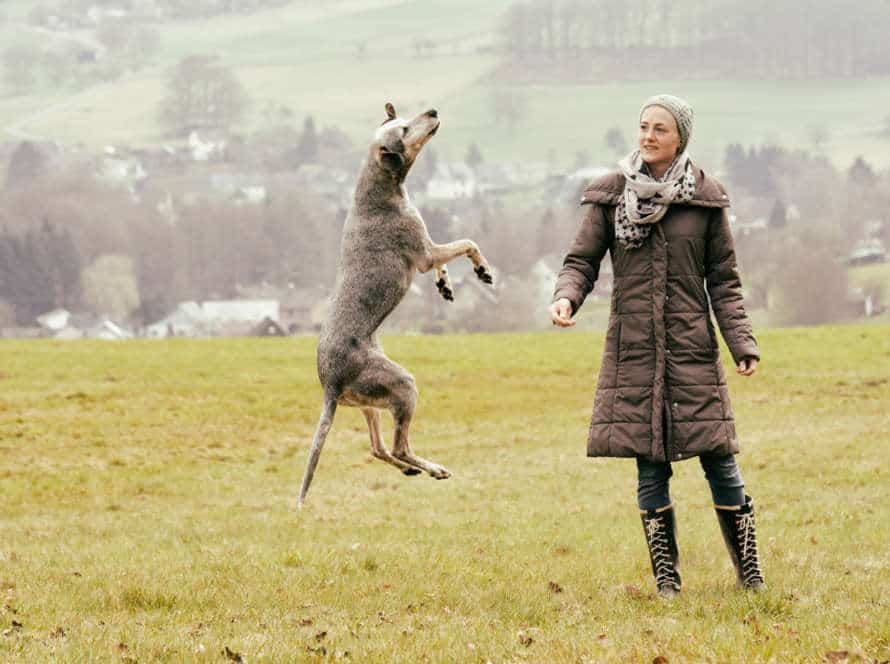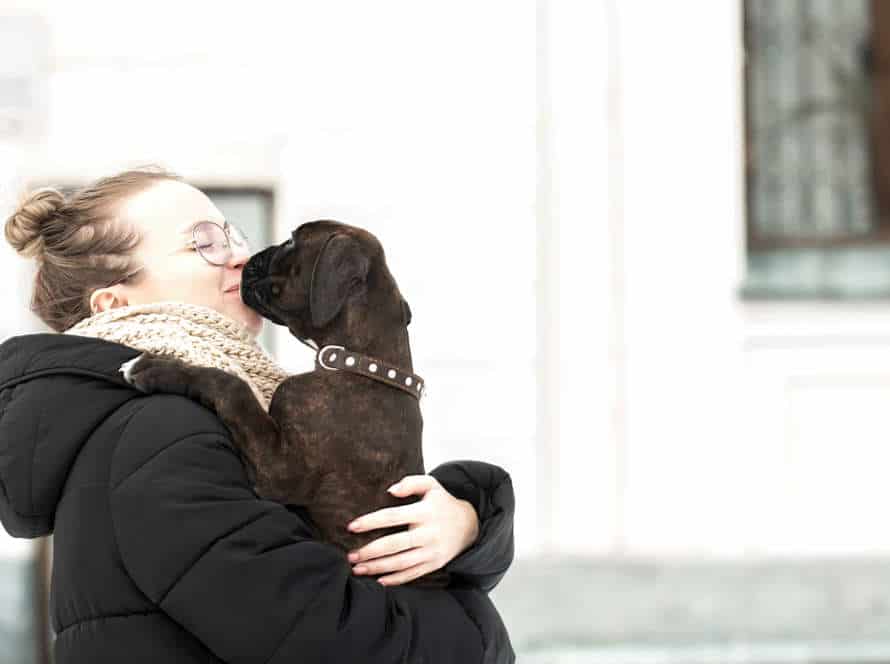Keep Your Dog Looking Great: Grooming Basics for Dog Owners
Grooming your pup is essential for pet owners. Here are some tips:
- Brushing: Do it regularly to avoid matting, remove fur and evenly spread natural oils. Long-haired breeds need daily brushing, short-haired less often.
- Bathing: Dogs need baths every 3-6 months. Use dog shampoo, lukewarm water to keep skin happy.
- Nail trimming: Trim every 4-6 weeks. Use clippers designed for dogs, avoid the quick.
- Coat care: Different breeds need different care. Research your pup’s needs and get the proper tools.
- Ear cleaning: Check ears regularly and clean with a soft cloth or cotton ball, damp with a gentle cleanser.
Regular grooming helps you bond with your pet and keep them healthy and happy for years.
Basic Tools for Grooming Your Dog
Groom your pup for its coat’s health and good looks! You’ll need some basic tools. Let’s explore the brushes, combs, shampoos and other items. These will help you groom the doggo correctly.
Brushing Your Dog’s Coat
Brushing your pup regularly is key to having a healthy and shiny coat. And here are some go-to tools for grooming your dog at home:
- Slicker brush: Super for everyday brushing, especially for those with long hair. They help remove dirt, debris, and loose fur.
- Pin brush: Great for those with medium to long fur. They detangle and get rid of loose hair while being gentle on your pup’s skin.
- Comb: Different shapes and sizes available. Perfect for tackling tangles and mats. Widely spaced teeth work best for long hair, and closer spacing for short coats.
- Shedding tool: Specially created for double-coated dogs, these tools come in various shapes and sizes – pick the right one for your pup’s coat.
Pro tip: Brush your pup daily to stop tangles, mats, and skin irritation.
Trimming Your Dog’s Nails
Trimming your pup’s nails is essential for their grooming and wellbeing. You don’t need any fancy tools; just a pair of nail clippers and styptic powder. Here’s how to do it:
- Gently yet firmly grasp your dog’s paw.
- Use the nail clippers to cut off the tip of the nail, being careful not to cut the quick.
- If you accidentally cut the quick, apply styptic powder to stop the bleeding.
- Repeat with all their nails, rewarding them with treats and praise to make it a positive experience.
Pro-tip: If you’re hesitant to trim your pup’s nails, start small and slowly increase the amount as you and your pup become more confident.
Cleaning Your Dog’s Teeth
Cleaning your pup’s teeth is a must for healthy oral care and avoiding tooth decay, gum disease, and bad breath. You’ll need some basics to start:
- Toothbrush: Get a brush specially designed to fit your pup’s mouth and teeth. Or, use a child’s soft-bristled brush.
- Toothpaste: Dog toothpaste comes in different flavors like beef, chicken, and peanut butter. Pick one that’s especially made for dogs, as human toothpaste can be toxic.
- Treats: Dental chews and bones can also help clean teeth.
Here’s how to brush your pup’s teeth:
- Put a small amount of toothpaste on the toothbrush and brush his teeth with a circular motion.
- Concentrate on the outside of the teeth, as that’s where most plaque and tartar build-up happens.
- Give your dog a dental treat when you’re done brushing.
- Note: If your pup is new to tooth brushing, do it slowly and gently. Gradually increase the time spent brushing his teeth to keep him comfortable.
Bathing Your Dog
Bathing your pup is a must! It’s not only great for their fur and dirt removal, but also beneficial for both you and your dog. So, how often should you do it? What tools do you need? And how do you properly do it? Let’s get into the basics of bathing your pup!
Frequency of Baths
How often to bathe your pup depends on the breed, coat type, and how active they are. Generally, short-haired pups who don’t have skin issues should be washed every 3 months. But those with long hair and skin allergies may need a bath each week.
Here are some tips to help decide:
- Check the coat type – Long or short? Straight, wavy, or wiry?
- Note the pup’s daily activities – Does it mostly stay inside, or does it love to go outdoors and roll in the mud?
- Look out for signs of skin conditions – Is the skin dry, flaky, or itchy? This could indicate allergies or other issues.
Regular brushing and grooming can help keep your pup clean, reducing the need to bathe often.
Preparing for the Bath
A bath is vital for keeping your pup clean and safe. You need to get the right tools and ensure the experience is stress-free. Here’s how to get ready:
- Gather shampoo, towels, a brush and a non-slip mat.
- Brush the coat to remove tangles or mats.
- Pop cotton balls in ears to stop water getting in.
- Check the temperature of the water – it should be lukewarm.
- Put your dog in the bathtub, or suitable area. Use a leash if needed.
- Wet the coat, avoiding head and face.
- Apply shampoo and massage it in, lather up.
- Rinse with lukewarm water.
- Towel dry and use a hairdryer on low, cool setting.
- Reward with treats and praise for good behaviour.
Washing Your Dog
Groom your pup with proper techniques to keep them lookin’ great.
- Brush before wash to avoid tangles and mats.
- Use lukewarm water and a special shampoo made for dogs. Avoid human products, as they can dry out their skin.
- Clean their face with a washcloth, being careful not to get soap or water in their eyes/ears.
- Rinse off all shampoo residue.
- Towel dry or use a cool hairdryer.
- How often to wash depends on breed, activity and coat. Ask your vet for advice.
Handling Special Considerations
It’s important to keep your pup looking their best! When it comes to grooming, some breeds require special care. Double-coated pooches like German shepherds, Labs and huskies need regular brushing to look their best. Meanwhile, long-haired breeds like shih tzus, Lhasa apsos and malteses may need haircuts to avoid matting. This section will discuss special considerations when it comes to dog grooming.
Dealing with Shedding
Dogs shed their fur to make room for new growth– it’s a natural process. But beware: too much shedding can signal poor health or grooming issues.
Here’s how to deal with it:
- Brush your dog weekly with the right brush for its coat type.
- Only bathe your dog when necessary. Too much washing can take away their natural oils, leading to dryness & more shedding.
- Feed your pup a healthy & balanced diet– this helps keep a healthy coat & skin.
- Take your pet to a professional groomer during shedding season, to get its coat trimmed & thinned out.
- If you see excessive shedding, bald patches, or skin irritation, check with your vet. This could indicate an underlying health condition or allergy.
Grooming Long-Haired Dogs
Long-haired dogs need more grooming than their short-haired pals. Here are some tips to help:
- Brush daily to keep the coat tangle-free. Use a slicker brush or comb.
- Bathe regularly using a mild dog shampoo. Avoid eyes and ears.
- Trim hair regularly to prevent matting. Can DIY or take to groomer.
- Keep ears clean and free of hair to avoid infections. Clean with cloth or ear-cleaning solution.
- Check paws regularly. Trim hair around the pads.
Long-haired dogs need more grooming for a healthy, happy look. Follow these tips for success!
Grooming Short-Haired Dogs
Grooming short-haired dogs is essential for their care. Not as much maintenance is needed as with long-haired breeds, but there are special things to keep in mind. Here are the basics for short-haired pups:
- Regular brushing: Use a soft-bristled brush. Removes dead hair and distributes natural oils.
- Bath time: Some short-haired ones get smelly quickly, so regular baths are a must. Use dog-specific shampoo and conditioner.
- Nail trimming: Short-haired dog nails can grow quickly. Use dog-specific clippers and trim the tips carefully.
- Ear care: Short-haired dogs are prone to infections, so clean their ears regularly. Use a cotton ball and vet-approved solution. Do not go deep into the ear canal.
- Dental care: Just like us, dental hygiene is important for dogs. Regular brushing with dog-friendly toothpaste/brush helps prevent periodontal disease and decay.
Pro tip: Reward your pup with treats and praise during grooming for a positive association.
Grooming for Specific Breeds
Your pup’s grooming routine and style can differ greatly, depending on the breed. Some require a more intensive groom, while others only need the basics. Here, we’ll go over basic grooming techniques for each breed, so your furry friend can look their best!
Poodle Grooming
Poodle grooming is essential for their health, happiness, and appearance. Brushing, bathing, trimming, and clipping are all key components. Start by brushing with a slicker brush and a comb to prevent matting. Bathing with a high-quality shampoo for sensitive skin is beneficial. Trimming around the feet, face, and tail helps movement and hygiene. Clipping includes puppy, continental, and English saddle – consult a groomer. Regular grooming helps remove dead hair, prevent skin infections, and keep your poodle in tip-top condition. Remember, it’s not just about looks – it’s vital for their health and well-being too.
Labrador Grooming
Labradors have coats that are short, thick, and weatherproof. Grooming is important to keep them looking and feeling good. Here’s what you should do:
- Brush their coat weekly with a slicker brush or shedding tool.
- Only bathe with a mild dog shampoo when needed.
- Trim their nails to avoid overgrowth.
- Clean their ears once a week with an ear cleaner.
- Brush their teeth daily with a dog-friendly toothpaste and toothbrush.
Regular grooming keeps them healthy and looking their best.
Golden Retriever Grooming
Golden Retrievers have a beautiful, long, thick coat. It needs regular care. Here are some tips:
- Brush twice a week. Use a slicker brush and metal comb to untangle the fur and remove loose hair.
- Bathe every 6-8 weeks. Use mild shampoo and conditioner. Rinse well.
- Trim nails every 4-6 weeks. Use a sharp clipper and trim at 45 degrees.
- Clean ears regularly. Vet-approved solution and cotton balls.
Pro tip: Start grooming your pup while young. Easier as they grow.
Frequently Asked Questions
Q: How often should I groom my dog?
A: It depends on the breed of your dog, but most dogs should be groomed every 4-6 weeks.
Q: Do I need to bathe my dog every time I groom them?
A: No, bathing your dog too often can dry out their skin and coat. It’s recommended to bathe your dog every 6-8 weeks or as needed.
Q: How do I trim my dog’s nails?
A: Use a pair of dog nail clippers and cut the nail a few millimeters away from the quick (the pink part of the nail). If you accidentally cut the quick, apply some styptic powder to stop the bleeding.
Q: Can I use human shampoo on my dog?
A: No, human shampoo can be too harsh for a dog’s skin and coat. Use a shampoo specifically made for dogs.
Q: How do I brush my dog’s teeth?
A: You can use a dog toothbrush and dog toothpaste to brush your dog’s teeth. Hold the brush at a 45-degree angle and brush in circular motions. Start slowly and gradually increase the time you spend brushing.
Q: What should I do if my dog has mats in their fur?
A: Use a dematting tool or comb to carefully remove the mats. If the mats are too severe, it’s best to see a professional groomer to avoid cutting or hurting your dog’s skin.

